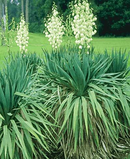Poisonous Plants
Poisonous Plants: What to do?
If you think that your pet may have ingested a potentially poisonous substance, make the call to Animal Poison Control (888) 426-4435, 24 hours a day/365 days a year. This call may make all the difference to your pet. A $65 consultation fee may be applied to your credit card for the call.
The American Society for the Prevention of Cruelty to Animals (ASPCA) (www.aspca.org/Pet-care/poison-control/Plants.aspx )has released a list of the most poisonous plants (inside and out) and their possible effects. The table below lists just a few of these, familiarize yourself with what they look like. You may have them in or around your home.

ARUM LILY
Additional Common Names: Arum, Lord-and-Ladies, Wake Robin, Starch Root, Bobbins, Cuckoo Plant
Toxicity: Toxic to Horses, Cats, & Dogs
Clinical Signs: Oral irritation, intense burning and irritation of mouth, tongue and lips, excessive drooling, vomiting, difficulty swallowing.
Additional Common Names: Arum, Lord-and-Ladies, Wake Robin, Starch Root, Bobbins, Cuckoo Plant
Toxicity: Toxic to Horses, Cats, & Dogs
Clinical Signs: Oral irritation, intense burning and irritation of mouth, tongue and lips, excessive drooling, vomiting, difficulty swallowing.

ASIATIC LILY
Toxicity: Toxic to Cats
Clinical Signs: Vomiting, inappetance, lethargy, kidney failure, and death is possible. Cats are only species known to be affected.
Toxicity: Toxic to Cats
Clinical Signs: Vomiting, inappetance, lethargy, kidney failure, and death is possible. Cats are only species known to be affected.

EASTER LILY
Toxicity: Toxic to Cats, Non-Toxic to Dogs, Non-Toxic to Horses
Clinical Signs: Vomiting, inappetence, lethargy, kidney failure, and death is possible. Cats are only species known to be affected.
Toxicity: Toxic to Cats, Non-Toxic to Dogs, Non-Toxic to Horses
Clinical Signs: Vomiting, inappetence, lethargy, kidney failure, and death is possible. Cats are only species known to be affected.

APPLE TREE
Additional Common Names: Includes crab-apples
Toxicity: Toxic to Horses, Cats, & Dogs
Toxic Parts:Stems, leaves, seeds contain cyanide, particularly toxic in the process of wilting
Clinical Signs:brick red mucous membranes, dilated pupils, difficulty breathing, panting, shock.
Additional Common Names: Includes crab-apples
Toxicity: Toxic to Horses, Cats, & Dogs
Toxic Parts:Stems, leaves, seeds contain cyanide, particularly toxic in the process of wilting
Clinical Signs:brick red mucous membranes, dilated pupils, difficulty breathing, panting, shock.

APRICOT TREE
Additional Common Names: Group also includes Plum, Peach, Cherry
Toxicity: Toxic to Horses, Cats, & Dogs
Toxic Parts:Stems, leaves, seeds contain cyanide, particularly toxic in the process of wilting:
Clinical Signs:brick red mucous membranes, dilated pupils, difficulty breathing, panting, shock.
Additional Common Names: Group also includes Plum, Peach, Cherry
Toxicity: Toxic to Horses, Cats, & Dogs
Toxic Parts:Stems, leaves, seeds contain cyanide, particularly toxic in the process of wilting:
Clinical Signs:brick red mucous membranes, dilated pupils, difficulty breathing, panting, shock.

ALOE VERA PLANT
Toxicity: Toxic to Dogs, Toxic to Cats
Clinical Signs: Vomiting, depression, diarrhea, anorexia, tremors, change in urine color.
Toxicity: Toxic to Dogs, Toxic to Cats
Clinical Signs: Vomiting, depression, diarrhea, anorexia, tremors, change in urine color.

ARROW-HEAD VINE
Additional Common Names: Nephthytis, Green Gold Naphthysis, African Evergreen, Trileaf Wonder
Toxicity: Toxic to Dogs, & Cats
Clinical Signs: Oral irritation, intense burning and irritation of mouth, tongue and lips, excessive drooling, vomiting, difficulty swallowing.
Additional Common Names: Nephthytis, Green Gold Naphthysis, African Evergreen, Trileaf Wonder
Toxicity: Toxic to Dogs, & Cats
Clinical Signs: Oral irritation, intense burning and irritation of mouth, tongue and lips, excessive drooling, vomiting, difficulty swallowing.

DIEFFENBACHIA
Scientific Name: Dieffenbachia amoena
Toxicity: Toxic to Dogs, Toxic to Cats
Clinical Signs: Oral irritation, intense burning and irritation of mouth , tongue and lips, excessive drooling, vomiting, difficulty swallowing
Scientific Name: Dieffenbachia amoena
Toxicity: Toxic to Dogs, Toxic to Cats
Clinical Signs: Oral irritation, intense burning and irritation of mouth , tongue and lips, excessive drooling, vomiting, difficulty swallowing

SPLIT-LEAF PHILANDENDRON
Additional Common Names: Hurricane Plant, Swiss Cheese Plant, Ceriman, Mexican Breadfruit, Split-leaf Philodendron, Window Leaf Plant
Toxicity: Toxic to Dogs, & Cats
Clinical Signs: Oral irritation, intense burning and irritation of mouth, tongue and lips, excessive drooling, vomiting, difficulty swallowing.
Additional Common Names: Hurricane Plant, Swiss Cheese Plant, Ceriman, Mexican Breadfruit, Split-leaf Philodendron, Window Leaf Plant
Toxicity: Toxic to Dogs, & Cats
Clinical Signs: Oral irritation, intense burning and irritation of mouth, tongue and lips, excessive drooling, vomiting, difficulty swallowing.

ELEPHANT EARS
Toxicity: Toxic to Horses, Cats, & Dogs
Clinical Signs: Oral irritation, intense burning and irritation of mouth tongue and lips, excessive drooling, vomiting, difficulty swallowing
Toxicity: Toxic to Horses, Cats, & Dogs
Clinical Signs: Oral irritation, intense burning and irritation of mouth tongue and lips, excessive drooling, vomiting, difficulty swallowing

CYCLAMEN
Additional Common Names: Sow-bread
Toxicity: Toxic to Dogs, & Cats
Clinical Signs: Salivation, vomiting, diarrhea. Following large ingestation of tubers: heart rhythm abnormalities, seizures, death.
Additional Common Names: Sow-bread
Toxicity: Toxic to Dogs, & Cats
Clinical Signs: Salivation, vomiting, diarrhea. Following large ingestation of tubers: heart rhythm abnormalities, seizures, death.

ENGLISH IVYAdditional Common Names: Glacier Ivy, Needlepoint Ivy, Sweetheart Ivy, California Ivy
Toxicity: Toxic to Horses, Cats, & Dogs
Clinical Signs: Vomiting, abdominal pain, hyper-salivation, diarrhea. Foliage is more toxic than berries
Toxicity: Toxic to Horses, Cats, & Dogs
Clinical Signs: Vomiting, abdominal pain, hyper-salivation, diarrhea. Foliage is more toxic than berries

ENGLISH HOLLY
Additional Common Names: European Holly, Oregon Holly, Ink-berry, Winter-berry
Toxicity: Toxic to Horses,Cats & Dogs
Clinical Signs: Vomiting, diarrhea and depression. Leaves and berries are low toxicity.
Additional Common Names: European Holly, Oregon Holly, Ink-berry, Winter-berry
Toxicity: Toxic to Horses,Cats & Dogs
Clinical Signs: Vomiting, diarrhea and depression. Leaves and berries are low toxicity.

SAGO PALM
Additional Common Names: Coontie Palm, Cardboard Palm, cycads and zamias
Toxicity: Toxic to Horses, Cats, & Dogs
Clinical Signs: Vomiting, melena, icterus, increased thirst, hemorrhagic gastroenteritis, bruising, coagulopathy, liver damage, liver failure, death.
Additional Common Names: Coontie Palm, Cardboard Palm, cycads and zamias
Toxicity: Toxic to Horses, Cats, & Dogs
Clinical Signs: Vomiting, melena, icterus, increased thirst, hemorrhagic gastroenteritis, bruising, coagulopathy, liver damage, liver failure, death.

OLEANDER
Additional Common Names: Rose-Bay
Toxicity: Toxic to Horses, Cats, & Dogs
Clinical Signs: Poisonings can occur from access to prunings or fallen branches. All parts contain a highly toxic cardiac glycoside much like digitoxin, and can cause colic, diarrhea (possibly bloody), sweating, in-coordination, shallow/difficult breathing, muscle tremors, recumbentcy, and possibly death from cardiac failure.
Additional Common Names: Rose-Bay
Toxicity: Toxic to Horses, Cats, & Dogs
Clinical Signs: Poisonings can occur from access to prunings or fallen branches. All parts contain a highly toxic cardiac glycoside much like digitoxin, and can cause colic, diarrhea (possibly bloody), sweating, in-coordination, shallow/difficult breathing, muscle tremors, recumbentcy, and possibly death from cardiac failure.

SILVER-JADE
Additional Common Names: Silver Dollar
Toxicity: Toxic to Dogs, & Cats
Clinical Signs: Nausea, retching
Additional Common Names: Silver Dollar
Toxicity: Toxic to Dogs, & Cats
Clinical Signs: Nausea, retching

JAPANESE-YEW
Additional Common Names: American Yew
Toxicity: Toxic to Horses, Cats & Dogs
Clinical Signs: Tremors, difficulty breathing, vomiting, seizures (dogs), sudden death from acute
Additional Common Names: American Yew
Toxicity: Toxic to Horses, Cats & Dogs
Clinical Signs: Tremors, difficulty breathing, vomiting, seizures (dogs), sudden death from acute

YUCCA
Toxicity: Toxic to Horses, Cats, & Dogs
Clinical Signs: Vomiting, diarrhea -- dogs, cats. Liver disease, secondary photosensitivity -- grazing animals.
Toxicity: Toxic to Horses, Cats, & Dogs
Clinical Signs: Vomiting, diarrhea -- dogs, cats. Liver disease, secondary photosensitivity -- grazing animals.

RHODODENDRON
Additional Common Names: Rose-bay, Rhododendron
Toxicity: Toxic to Horses, Cats, & Dogs
Clinical Signs: Vomiting, diarrhea, hypersalivation, weakness, coma, hypotension, CNS depression, cardiovascular collapse and death. Ingestion of a few leaves can cause serious problems. The toxic principle interferes with normal skeletal muscle, cardiac muscle and nerve function. Clinical effects typically occur within a few hours after ingestion, and can include acute digestive upset, excessive drooling, loss of appetite, frequent bowel movements/diarrhea, colic, depression, weakness, loss of coordination, stupor, leg paralysis, weak heart rate and recumbency for 2 or more days; at this point, improvement may be seen or the animal may become comatose and die.
Additional Common Names: Rose-bay, Rhododendron
Toxicity: Toxic to Horses, Cats, & Dogs
Clinical Signs: Vomiting, diarrhea, hypersalivation, weakness, coma, hypotension, CNS depression, cardiovascular collapse and death. Ingestion of a few leaves can cause serious problems. The toxic principle interferes with normal skeletal muscle, cardiac muscle and nerve function. Clinical effects typically occur within a few hours after ingestion, and can include acute digestive upset, excessive drooling, loss of appetite, frequent bowel movements/diarrhea, colic, depression, weakness, loss of coordination, stupor, leg paralysis, weak heart rate and recumbency for 2 or more days; at this point, improvement may be seen or the animal may become comatose and die.
ADDRESS
Mesquite Veterinary Hospital
15999 N. Oracle Road
Tucson, Arizona 85739
Phone # 520-825-3211
Fax # 520-825-2714
Mesquite Veterinary Hospital
15999 N. Oracle Road
Tucson, Arizona 85739
Phone # 520-825-3211
Fax # 520-825-2714
Hours
M-F: 8am - 5:30pm
Sat. 8am - 12:00pm
Sun. Closed
Sat. 8am - 12:00pm
Sun. Closed
Urgent Care Help
UrgentVet Oro Valley
10556 N. Oracle Rd.
Oro Valley, AZ 85737
(520)614-6300
Urgent Care Help & Emergency 24-Hour Care
Veterinary Emergency Group (24/7)
7080 N. Oracle Rd.
Tucson, AZ 85704
(520)476-3410
Veterinary Specialty Center of Tucson (24/7)
4909 N. La Canada Drive
Tucson, Arizona 85704
(520)795-9955
VCA Valley Animal Hospital and Emergency Center (24/7)
4984 E. 22nd Street
Tucson Arizona 85711
(520)748-0331
Southern Arizona Veterinary Specialty & Emergency Center (24/7)
7474 E. Broadway Blvd.
Tucson Arizona 85710
(520)888-3177 (Option #2)
UrgentVet Oro Valley
10556 N. Oracle Rd.
Oro Valley, AZ 85737
(520)614-6300
Urgent Care Help & Emergency 24-Hour Care
Veterinary Emergency Group (24/7)
7080 N. Oracle Rd.
Tucson, AZ 85704
(520)476-3410
Veterinary Specialty Center of Tucson (24/7)
4909 N. La Canada Drive
Tucson, Arizona 85704
(520)795-9955
VCA Valley Animal Hospital and Emergency Center (24/7)
4984 E. 22nd Street
Tucson Arizona 85711
(520)748-0331
Southern Arizona Veterinary Specialty & Emergency Center (24/7)
7474 E. Broadway Blvd.
Tucson Arizona 85710
(520)888-3177 (Option #2)
